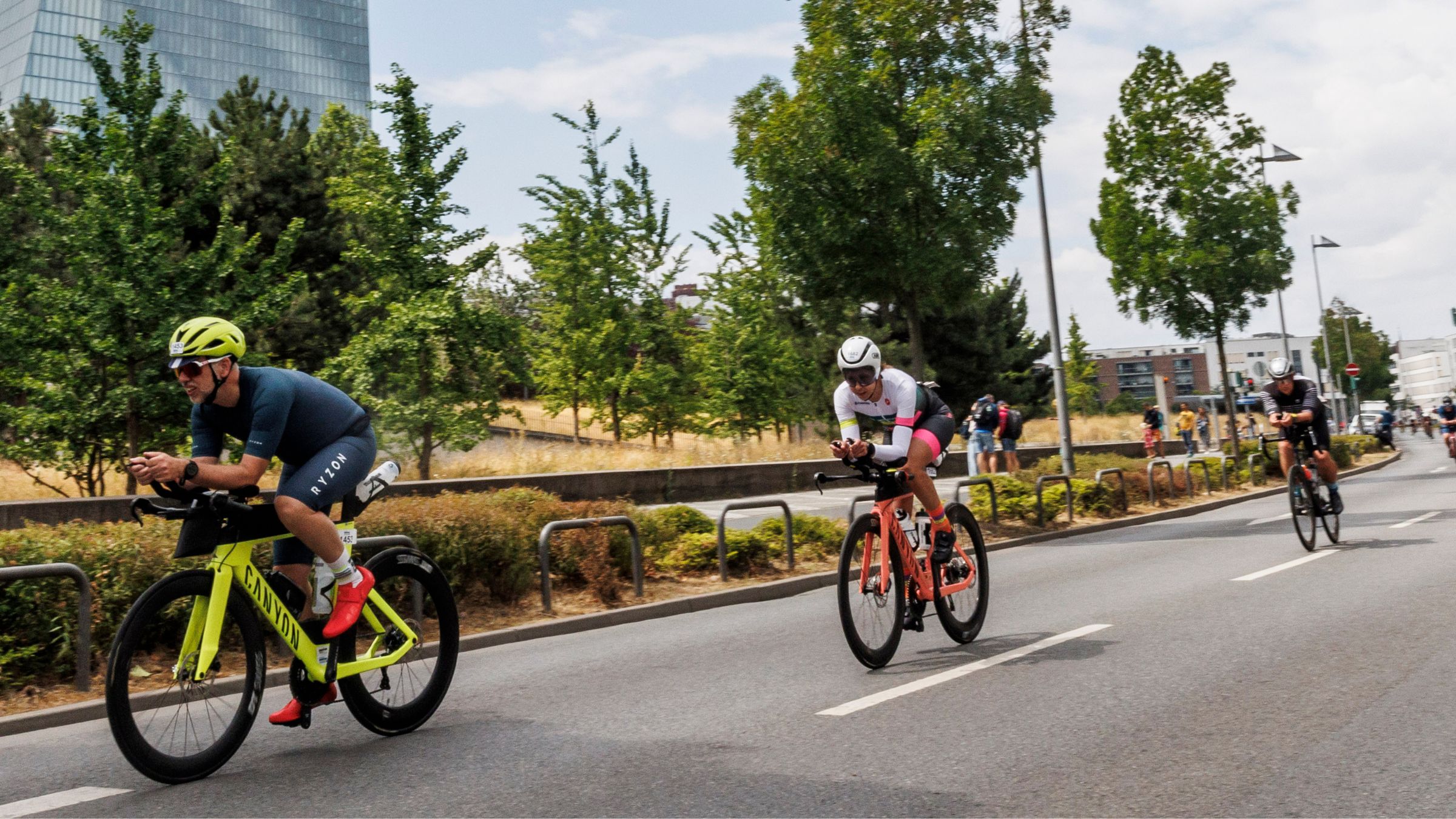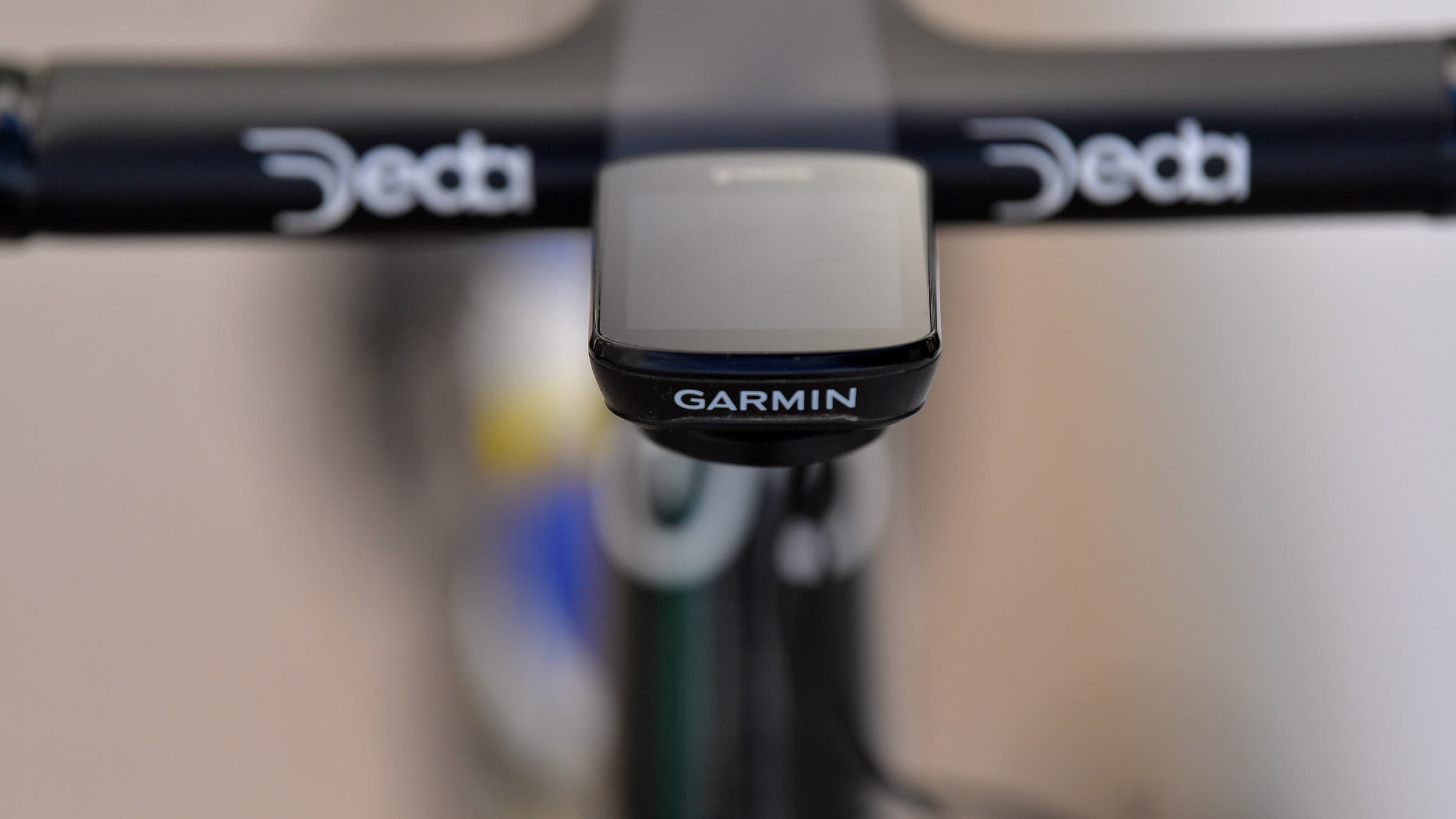How To Use a Power Meter In a Race

Trying to figure out how to set up your power meter for a race is a rite of passage for many triathletes. (Photo: Jan Hetfleisch/Getty Images)
Table of Contents
A power meter can provide invaluable information during the bike leg of a race – if you understand what the power data represents and how that data translates to your effort level and your race strategy. To effectively use the data from your power meter, it’s helpful to understand why it’s so reliable, how it relates to your effort level and race strategy, and how to execute a power-driving race strategy during a race.
RELATED: Riding with a Power Meter Will Supercharge Your Training
Why use power on race day?
We rely on a range of metrics to evaluate effort level, or how hard we are working during training and racing; typically we look at some or all of heart rate, pace, rate of perceived exertion (RPE), and power. Heart rate, pace, and RPE are all easily influenced by external factors, such as fatigue, hydration levels, duration of the workout or race, air temperature and humidity, and conditions like wind and road surface and incline/decline. Power, on the other hand, is a pure and unbiased measurement of how hard you are pushing on the pedals of your bike. It is an actual physical measurement of how hard you are working. And given that, power data provides the most reliable representation of your effort level.
How power relates to effort level in training
Just like heart rate, pace, and RPE, you can test your power threshold (typically called functional threshold power, or FTP) and use that to set your power training zones using a chart like the one shown below. If all of that is Greek to you and you have a race in the coming weeks, set power aside and come back to it post-race. If you’ve tested (and maybe re-tested and re-tested) your FTP over the past months and maybe years, then you should know your FTP and power zones the same way you know your birthdate and phone number. If not, now’s the time to commit those numbers to memory:
| Zone | Effort Level | % of FTP | RPE | Description |
| 1 | Easy/Recovery | Up to 55% | 3 | Comfortable, barely breaking a sweat, could maintain this pace almost indefintely |
| 2 | Endurance | 56-75% | 4 | Comfortable, sweating a little, below the "conversational threshold" |
| 3 | Tempo | 76-87% | 5 | Slightly above comfortable, working but still able to hold effort level for longer durations |
| 4 | Sweet Spot | 88-94% | 6 | Not yet uncomfortable, but working hard |
| Threshold | 95-105% | 7 | On the verge of becoming uncomfortable, a strong effort level | |
| 5a | VO2 | 106-120% | 8 | Uncomfortable, hard to talk, short window to hold effort level |
| 5b | Anaerobic | 121-150% | 9 | Very uncomfortable, hard to breathe, hard to maintain effort level |
| 5c | Max Effort | 151% and up | 10 | Can only maintain for a very short time, absolutely everything you've got |
RELATED: The Complete Guide To Setting Your Triathlon Training Zones
How power relates to effort level in racing
If you know your FTP and power zones, have been training using your power zones, and have been capturing power data in your training, then you can use that information to set a base power target for your race. Start by setting a preliminary power target using the chart below, which provides ranges for typical power targets by race distance. Well-trained, experienced, faster athletes typically use the higher end of the ranges; under-trained, inexperienced, and/or slower athletes will be better served using the lower end of the ranges.
| Race Distance | % of FTP |
| Sprint | 90-105% |
| Olympic | 85-95% |
| Half-Iron | 75-85% |
| Full Iron | 65-80% |
Next, consider whether you’ve demonstrated your ability to sustain that power target in training. For full-distance events, that looks like long rides with 75-90% of execution at your power target. For shorter events, that looks like long intervals at your power target (10+ minutes for a Sprint-distance event, 20+ minutes for an Olympic-distance event, 30+ minutes for a half-distance event), ideally within long rides but mid-week interval workouts can also be referenced. If necessary, adjust your power target to better reflect your training.
Finally, consider additional factors such as race-day temperature, change in altitude between the race venue and your training location, and your overall race goals. A day that’s hotter than your body’s acclimation, an increase or decrease in altitude, or prioritizing a strong run may dictate additional adjustments to your power target.
RELATED: 4 Pros Pull Back The Curtain on Their Data Screens

How power relates to race strategy
Once you’ve set your base power target, translating that singular number to a full-blow race strategy requires incorporating the nuances of your preferred cycling style and the details of the bike course profile.
The simplest translation from base power target to race strategy would be for an athlete who likes to hold steady-state power from start to finish and is racing on an essentially flat race course. If that describes your style and your race, then your strategy is to hold your base power target +/-5 watts from mount line to dismount line. Simple, straightforward, and easy to remember.
If, however, your body responds better when you build to your power target and/or your goal is to negative split the bike, then your race strategy might have different power targets for the beginning, middle, and end of the bike leg. If building to your power target sounds like your style, then plan to spend the beginning miles – say 2-10 miles depending on the length of your race – doing just that. If your goal is to negative split the bike, then divide your bike leg into thirds and plan to equally offset your power target over the first and last thirds of the bike.
Finally, if your bike course profile includes hills, your race strategy should incorporate adjusted targets for both climbing and descending. Depending on your FTP, that could look like an increase of 5-10 watts for moderate climbs, an increase of 10-20 watts for steeper climbs (limiting the top end as best you can given the grade of the climb and your gearing), and a decrease of 5-20 watts when descending (coasting once you are below 55-60% of FTP in your max gearing combination).
How to execute a power-driven race stragegy
At this point, you’ve developed the perfect power plan for race day. So how are you going to ensure that you execute your plan? You have to: (1) know the plan and (2) stick to the plan.
Let’s start with knowing the plan. If your brain naturally retains numbers, you can likely recite your base power targets along with any adjustments to those targets with ease. If that’s not your strong suit, you’ll need a backup method: writing them on your hand or arm or securing an index card with the targets to your base bars or top tube are both good options.
Sticking to the plan requires constant vigilance. You need to monitor your data throughout the bike ride and make continual adjustments to stay as close to your targets as possible. And to monitor your data, you’ll need to set up your watch or bike computer to actually show you the data that’s important.
Side Note: Power vs Normalized Power
Up until now, we’ve been thinking about power output in terms of a distinct number. However, when you monitor your race-day power output, you want to monitor your average Normalized Power and not your straight averaged power. What’s the difference? So as not to veer off into an entirely different conversation, Normalized Power better represents the aggregate impact of your discrete power output over the duration of your bike leg. Specifically, Normalized Power takes into account the variability of the individual power data points, and is what ultimately lives in your legs and affects your run performance.
The following data fields allow you to capture both your power in the moment, your power over an influenceable period of time, and your power over the entire bike leg:
- Three-Second Rolling Average Power (3s Power): Power (think of it as instantaneous power) tends to be very jumpy and therefore provides a confusing perspective on your power in the moment. A three-second rolling average power reading smooths out the power data just enough to give you a more stable reading while still providing feedback on what you are doing right now in terms of workload.
- Lap Normalized Power (Lap NP): The thing about averages is that once you have collected a large number of data points, one additional data point doesn’t move the average very much, and maybe not at all. So once you’re ten miles or so into a ride, the Normalized Power number becomes challenging to influence in the short term. To avoid drastic measures while trying to change an overly high or low ride average, Lap Normalized Power gives you both a wider view of your power over time and also resets regularly, giving you ongoing, fresh opportunities to hit your power targets. Lap NP also proves to be helpful when you have different power targets for different sections of the ride due to building your effort level or the details of the course profile. (Most watches and bike computers are factory pre-set to auto-lap every five miles; if yours currently doesn’t auto-lap, be sure to set up that functionality pre-race.)
- Normalized Power (NP): Normalized Power, of course, gives you a true read on where you are relative to your base power target for the entire duration of the ride. If you think of it as the average of your Lap NPs, then you can combine laps with higher and lower Lap NPs to balance each other out and ultimately arrive at your target power.
RELATED: What is Normalized Power vs. Average Power?
A power meter can be invaluable in properly pacing your bike leg and setting you up for a strong run – if you know your power zones and targets and also know how to build and execute your power-based race plan. Which at this point you do, so go out there and crush your next race.
RELATED: Ask a Gear Guru: What Are the Best Cycling Power Meters for Triathletes?
Alison Freeman is a co-founder of and triathlon coach with NYX Endurance in Boulder, Colorado. She works with a wide range of age-group athletes, but athletes new to long-course triathlon are her favorites because there is no such thing as too many questions.